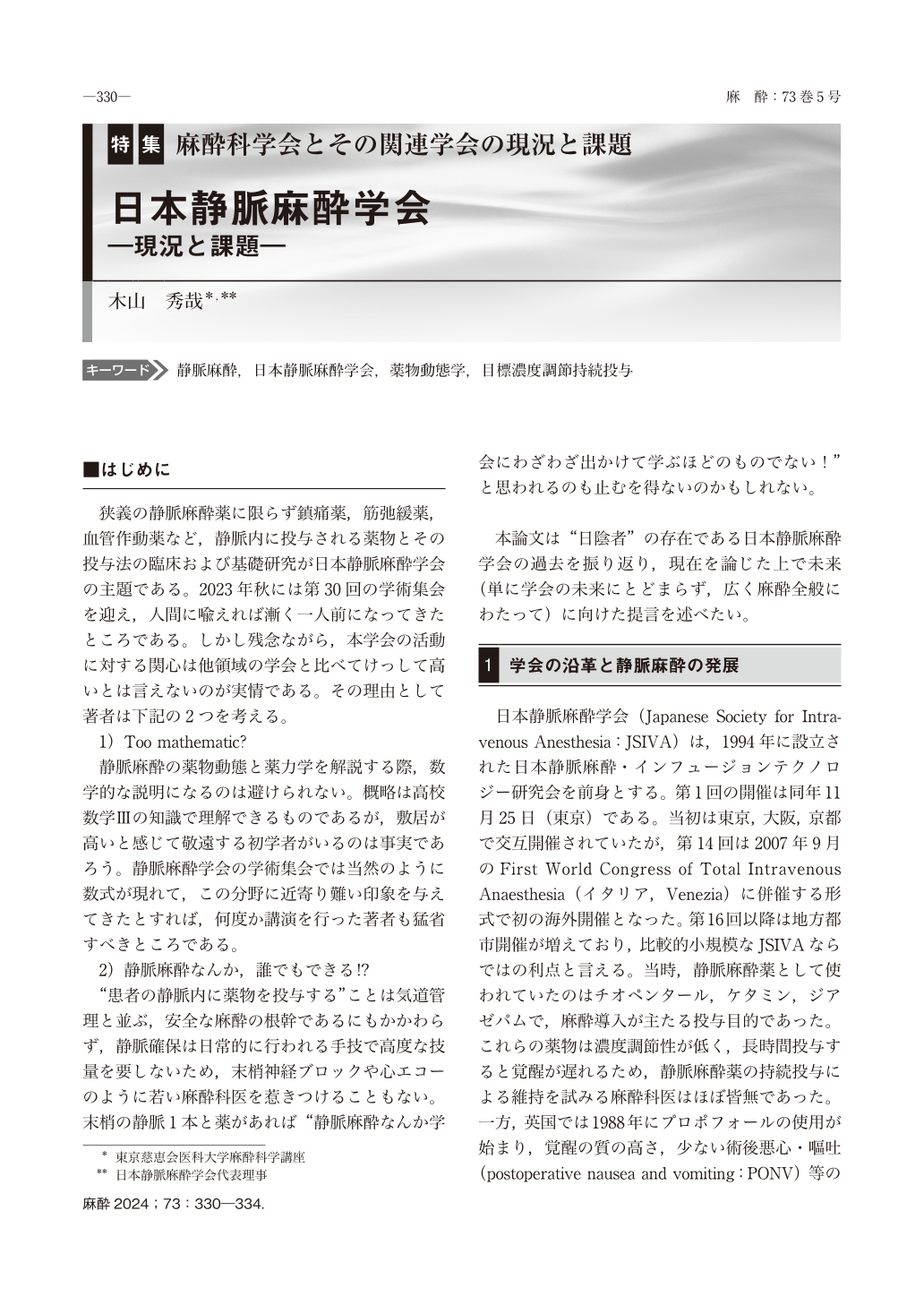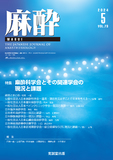Japanese
English
- 有料閲覧
- Abstract 文献概要
- 1ページ目 Look Inside
- 参考文献 Reference
はじめに
狭義の静脈麻酔薬に限らず鎮痛薬,筋弛緩薬,血管作動薬など,静脈内に投与される薬物とその投与法の臨床および基礎研究が日本静脈麻酔学会の主題である。2023年秋には第30回の学術集会を迎え,人間に喩えれば漸く一人前になってきたところである。しかし残念ながら,本学会の活動に対する関心は他領域の学会と比べてけっして高いとは言えないのが実情である。その理由として著者は下記の2つを考える。
1)Too mathematic?
静脈麻酔の薬物動態と薬力学を解説する際,数学的な説明になるのは避けられない。概略は高校数学Ⅲの知識で理解できるものであるが,敷居が高いと感じて敬遠する初学者がいるのは事実であろう。静脈麻酔学会の学術集会では当然のように数式が現れて,この分野に近寄り難い印象を与えてきたとすれば,何度か講演を行った著者も猛省すべきところである。
2)静脈麻酔なんか,誰でもできる⁉
“患者の静脈内に薬物を投与する” ことは気道管理と並ぶ,安全な麻酔の根幹であるにもかかわらず,静脈確保は日常的に行われる手技で高度な技量を要しないため,末梢神経ブロックや心エコーのように若い麻酔科医を惹きつけることもない。末梢の静脈1本と薬があれば “静脈麻酔なんか学会にわざわざ出かけて学ぶほどのものでない!” と思われるのも止むを得ないのかもしれない。
本論文は “日陰者” の存在である日本静脈麻酔学会の過去を振り返り,現在を論じた上で未来(単に学会の未来にとどまらず,広く麻酔全般にわたって)に向けた提言を述べたい。
The first academic meeting of the Japanese Society for Intravenous Anesthesia(JSIVA)was held in November 1994. The main goals of the JSIVA have been to promote practice and research on intravenous anesthetics and infusion technology designed to deliver drugs based on pharmacokinetic principles. When the JSIVA was established 30 years ago, the most commonly used intravenous anesthetic was thiopental, and occasionally ketamine was chosen for asthmatic or hemodynamically unstable patients. Propofol had not yet been introduced to Japan, and invited speakers from abroad thus gave lectures on this new anesthetic. Propofol became available in Japan in 1995, followed by the approval of target controlled infusions using a prefilled syringe in 2001. Many members of the JSIVA have actively participated in symposiums, workshops, and hands-on seminars at various scientific meetings and have played a major role in the promotion of the correct understanding of basic pharmacology and clinical applications of intravenous anesthesia. Compared to other subspecialties such as regional anesthesia or cardiovascular anesthesia which require technical expertise, the practice of intravenous anesthesia may be less attractive for younger generations who are on learning curves of various technical skills. However, an unobstructed airway and a reliable venous route are two indispensable fundamentals of safe anesthesia. This author believes that the JSIVA should continue to be a leader in order to teach and distribute essential knowledge and practical tips regarding intravenously administered drugs and the anesthetic agents that may be available in the future.

Copyright © 2024 KOKUSEIDO CO., LTD. All Rights Reserved.


